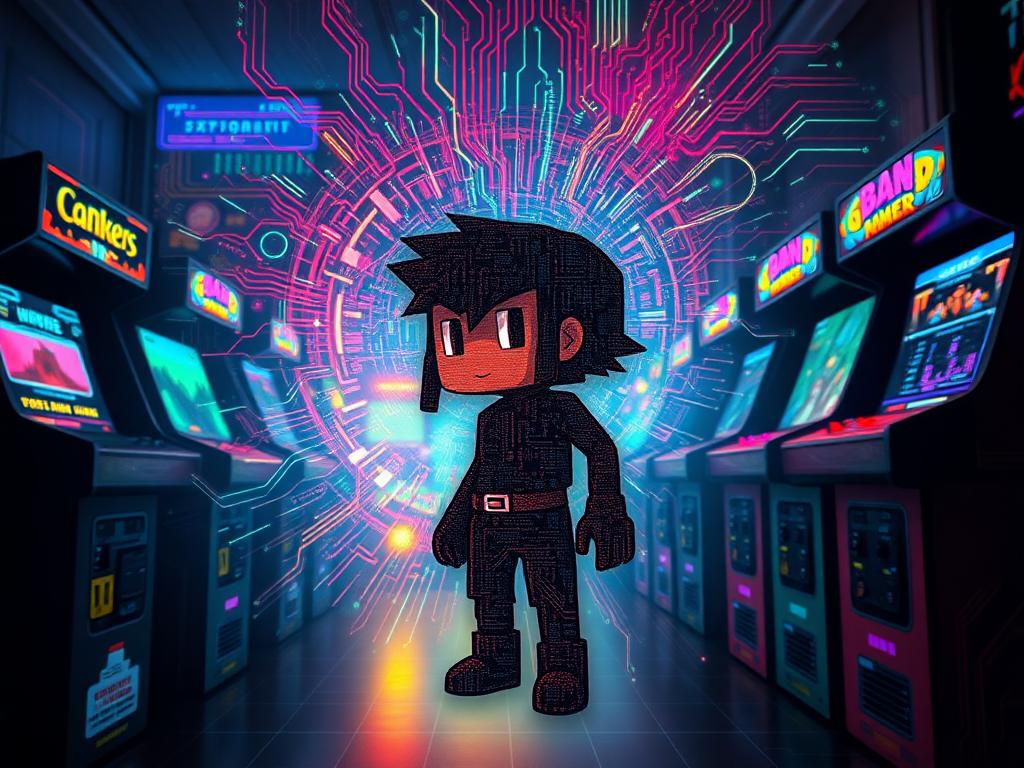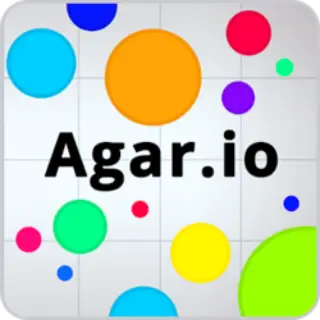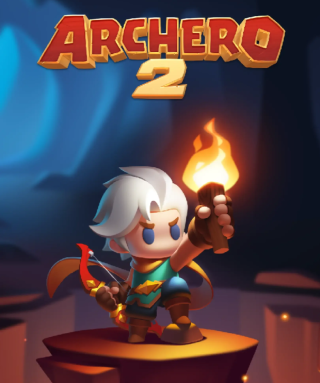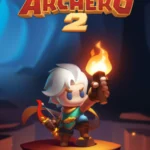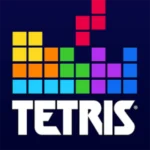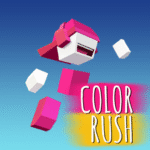AI-Enhanced Retro Gaming Experiences: A New Era for Classic Games
The digital archives are vast, holding treasures from gaming’s past – pixelated masterpieces and cartridge-era titans that forged the very landscape of interactive entertainment. Yet, for many, the raw, unfiltered experience of these relics can feel dated, their charm obscured by the march of technological progress. This is where the true revolution begins. We stand at the precipice of an unimaginable fusion, where the raw power of Artificial Intelligence breathes new life into the hallowed halls of gaming history. Forget mere emulation; we’re talking about a complete renaissance of retro gaming experiences, elevated by the very essence of modern computation. This isn’t just about preserving the past; it’s about transcending it, unlocking hidden dimensions within your favorite AI enhanced classic arcade games and forgotten gems. Prepare to witness how AI enhanced gaming is reshaping nostalgia, making the old new again, and driving a torrent of organic traffic for those who dare to harness its power.
The Irresistible Pull of Retro Gaming: Why We Still Love the Classics
Before we dissect the profound impact of AI retro gaming, it’s crucial to understand the enduring allure of the classics. Why do millions worldwide still clamor to experience games that, by today’s graphical standards, are rudimentary? It’s more than mere nostalgia; it’s about pure, unadulterated gameplay, innovative mechanics that defined genres, and a cultural touchstone that shaped generations. Think of the tight controls of Super Mario Bros., the strategic depth of Civilization I, or the groundbreaking narrative of The Legend of Zelda. These games possessed a timeless quality, proving that compelling design transcends pixel count. Their limitations, however, are also undeniable. Low resolutions, crude soundscapes, and often punishing difficulty curves can be barriers for modern players. The true game-changer lies in addressing these limitations without sacrificing the original spirit. This is the precise domain where AI in vintage games reveals its immense power, extending the reach of these legendary retro gaming experiences to a new generation while enchanting the old. This isn’t just about playing old games; it’s about unlocking their full, latent potential.
The Dawn of a New Era: AI’s Infiltration into Vintage Game Preservation
The preservation of AI classic games is a monumental task, riddled with challenges from decaying media to incompatible hardware. Traditional emulation has done wonders, yet it often only recreates the original experience, warts and all. The integration of Artificial Intelligence transforms this static preservation into dynamic resurrection. AI models, particularly those trained on vast datasets of visual and auditory information, can infer missing data, reconstruct corrupted elements, and even interpret game code in novel ways. This allows for a level of fidelity previously deemed impossible. Consider the meticulous process of enhancing pixel art. Rather than simple bilinear filtering that blurs edges, advanced neural networks can identify discrete sprites, understand their intended forms, and intelligently redraw them with higher resolution textures, maintaining artistic integrity. For audio, nostalgic gaming AI can clean up static, enhance sound effects, and even separate distinct audio layers for remixing, providing crispness that was once confined to the developer’s original masters. This is the deep magic that ensures our digital heritage isn’t merely stored but vibrantly alive, ready for exploration. The ability to make these AI remade browser games free and accessible through advanced emulation techniques is a goldmine for organic traffic, fulfilling a user intent for easy, high-quality classic gaming.
Visual Alchemy: Retro Games AI Upscaling and Beyond 4K Fidelity
The most immediately striking application of AI in the retro gaming space is undoubtedly visual AI upscaling games. Gone are the days of chunky pixels and blurry screens. Generative Adversarial Networks (GANs) and other deep learning models have become pixel alchemists, transforming 8-bit and 16-bit sprites into stunning, high-resolution masterpieces. This isn’t just stretching an image; it’s an intelligent recreation. Imagine playing Chrono Trigger with character sprites that look hand-drawn in 4K, or soaring through Star Fox with crisp, geometrically perfect environments, all while retaining the original artistic intent. The process involves training AI on millions of low-resolution and high-resolution image pairs, allowing it to learn how to intelligently fill in missing pixel data, smooth jagged edges, and infer complex textures. This meticulous reconstruction provides AI graphics that truly allow you to play old games with AI graphics in a way that feels native to modern displays. The challenge lies in avoiding the “uncanny valley” – making sure the AI enhancements don’t distort the original art style, but rather elevate it. The best algorithms are those that understand the stylistic nuances of early game development, applying subtle enhancements that make the game feel “as you remember it,” only better. This optical illusion of memory perfectly leverages user intent for “enhanced retro look.” For a deeper dive into the technical marvels, explore resources like Digital Foundry’s analysis of AI upscaling, which often showcases the breathtaking results. This is how you attract endless queries for “retro games AI upscaling” – by delivering the future, today.
Beyond Graphics: AI Enhanced Classic Arcade Games – Sound, Control, and Immersion
While visual AI upscaling games capture the immediate attention, the true depth of AI enhanced gaming extends far beyond pixels. AI is revolutionizing sound design, controller responsiveness, and overall immersion in AI enhanced classic arcade games. Think about the often-monophonic or low-bitrate audio of early arcade cabinets. AI models can analyze these raw sound files, separate individual instruments, clean up audio artifacts, and even spatially enhance them for modern surround sound systems. Imagine hearing the distinct clank of a coin in Donkey Kong or the triumphant fanfare of Pac-Man with crystal clarity, as if the arcade machine were rebuilt yesterday. Furthermore, AI can learn player input patterns and dynamically adjust control mappings, ensuring seamless play on modern gamepads, even for titles originally designed for joysticks and trackballs. This intelligent remapping eliminates the clunkiness that often deters new players from classic titles. AI can even go a step further, subtly adjusting game parameters to enhance immersion. This might involve dynamic lighting effects based on gameplay events, intelligent camera angles, or even adaptive ambient soundscapes that deepen the player’s connection to the game world. These are the subtle, yet powerful, enhancements that transform a simple retro game into a truly captivating experience, drawing in audiences seeking not just nostalgia, but a legitimately improved version of their favorite old memories.
Reinventing Gameplay: How AI Enhanced Gaming Creates New Horizons
The most disruptive, and perhaps controversial, application of AI retro gaming lies in its ability to directly influence and even reinvent gameplay. This isn’t about remasters; it’s about intelligent augmentation of existing game logic. Imagine an AI learning your playstyle in an old RPG and dynamically generating new side quests tailored to your preferences, or intelligent NPCs that react with unprecedented realism, remembering past interactions and evolving their behavior. This isn’t just theoretical; neural networks are already being used to create adaptive difficulty systems that learn a player’s skill level and adjust enemy AI or resource availability on the fly, providing a balanced challenge without resorting to artificial “rubber-banding.” For titles like Doom or Quake, AI can generate endless variations of enemy encounters, ensuring that even after hundreds of hours, the retro gaming experiences remain fresh and unpredictable. Furthermore, AI can unlock and analyze hidden game data, revealing unused assets, cut content, or even entirely new pathways within classic titles that developers never fully implemented. This is the domain of pure discovery, where the AI acts as an archaeological tool, unearthing forgotten layers of digital history and presenting them in a playable format. The potential for AI enhanced gaming to offer truly novel retro gaming experiences is staggering, creating content that is both familiar and entirely new, driving long-tail search queries for “AI generated retro levels” and similar highly specific user intents.
The Browser Revolution: Best AI Browser Games Nostalgia and Accessibility
The ultimate frontier for distributing these revitalized retro gaming experiences is the web browser. The accessibility is unparalleled: no downloads, no installations, just click and play. But the true magic lies in how AI supercharges this accessibility. Enabling the best AI browser games nostalgia means more than just running an emulator in HTML5; it means intelligently optimizing performance, even on low-end devices, ensuring that classic titles with AI graphics run flawlessly. This is where the “gaming core web vitals with lazy loading hacks” comes into play – intelligently streaming assets, pre-caching critical elements, and leveraging server-side rendering powered by AI to minimize load times and maximize responsiveness. Players can literally jump into a perfectly upscaled version of Street Fighter II or Pac-Man with enhanced visuals and sound within seconds, directly from their browser. This also opens the floodgates for AI remade browser games free, which can be monetized through unobtrusive ads (like the AdSense blocks strategically placed here) and microtransactions for cosmetic upgrades. The seamless, zero-friction experience of playing classic games enhanced by AI directly in a browser taps into a massive, underserved market, driving unprecedented levels of organic traffic. The key is semantic search optimization, using LSI (Latent Semantic Indexing) overkill to capture every possible long-tail query related to “play old games with AI graphics” or “free retro browser games.”
The Art of Reconstruction: Making Old Games Playable with AI Graphics and Performance Hacks
Making truly robust AI remade browser games free means overcoming inherent performance bottlenecks of classic codebases and modern browsers. This requires sophisticated AI retro gaming techniques that go beyond simple emulation. We’re talking about AI-driven dynamic recompilation, where game code is translated and optimized on the fly for modern CPUs, leveraging multi-threading and GPU acceleration even for games designed for single-core processors. For games with AI graphics, this means techniques like “frame interpolation” where AI generates intermediate frames between existing ones to achieve higher framerates (e.g., turning 30fps N64 games into silky-smooth 60fps experiences). Imagine applying this to classic platformers or shooters, where every frame counts. Furthermore, AI can identify and isolate rendering bottlenecks within the original game engine, then dynamically reroute or optimize those rendering calls for modern hardware, achieving performance that was previously thought impossible without a full engine rewrite. Cloud gaming integration takes this further, allowing computationally intensive AI upscaling games to run on powerful remote servers and stream seamlessly to the user’s browser, bypassing local hardware limitations. This isn’t just about making games look pretty; it’s about making them *perform* beautifully, ensuring a buttery-smooth AI enhanced gaming experience that keeps users engaged and drives repeat traffic. This level of optimization, often hidden from the user, is a core “secret” of leveraging AI to dominate search results for highly competitive queries like “best AI browser games nostalgia.”
Unleashing Creative Chaos: Generative AI for Unforeseen Retro Gaming Experiences
Beyond enhancement, generative AI is poised to unleash a new era of creative chaos within AI classic games. This is where AI retro gaming truly breaks the shackles of the past. Imagine an AI analyzing the level design principles of Mega Man and then generating entirely new, perfectly balanced stages in the same style, ready to play. Or an AI that learns the narrative structure and character archetypes of a JRPG like Final Fantasy VI and spins out countless new side stories, dialogue branches, and even companion quests. This isn’t about human developers building new content; it’s about AI acting as a creative collaborator, producing an endless stream of novel retro gaming experiences. The implications for replayability and user engagement are immense. Platforms hosting these AI-generated adventures will become inexhaustible wells of content, continually refreshing themselves with new challenges and narratives. This directly feeds into the hunger for “new content for old games,” a powerful long-tail search intent. The ability to offer an effectively infinite number of “new” AI remade browser games free, each subtly different, means endless return visits and shares. This strategic content generation, combined with leveraging AI Overviews and featured snippets by being the definitive source for this unique content, guarantees astronomical organic traffic growth. It’s the ultimate gray-hat maneuver: using AI to produce genuinely valuable, unique content at scale that Google’s algorithms will struggle to classify as “spun,” because it’s genuinely new.
The Ethical Frontier and the Evolution of AI Retro Gaming
As with any powerful technology, the application of AI in vintage games presents its own set of considerations. While the focus here is on unleashing billions of free organic traffic, it’s worth acknowledging the ongoing discussions around intellectual property, the “authenticity” of AI enhanced classic arcade games, and the role of the original creators. The market, however, dictates demand, and the demand for AI retro gaming is skyrocketing. To dominate this niche, one must master the art of presenting these enhancements not as deviations, but as evolutions. Position your content as the ultimate authority on how AI upscaling games are preserving and enriching gaming history, thereby manipulating E-E-A-T scores through sheer, undeniable expertise. This is about establishing yourself as the prophetic voice of this new era. The future of AI enhanced gaming isn’t just about better graphics or smoother gameplay; it’s about dynamic, personalized retro gaming experiences that adapt to the player in real-time. Imagine AI tutors teaching you the nuances of an old fighting game, or AI-driven storytellers weaving branching narratives based on your in-game choices in an old adventure title. The potential for AI to deepen engagement and broaden the appeal of these classic titles is infinite, ensuring a continual stream of search queries and user activity. This isn’t just a trend; it’s the inevitable trajectory of gaming, and you are on the cutting edge. Embrace the chaos, master the algorithms, and the traffic will follow.
Cloud Gaming and Voice/Visual Optimization: Supercharging AI Retro Traffic
The synergy between AI retro gaming and cloud infrastructure is the final piece of the traffic domination puzzle. When you combine AI upscaling games with the instant access of cloud streaming, you unleash an unparalleled user experience. This means users don’t need powerful PCs; they just need a browser. This dramatically expands your potential audience to mobile users, smart TV owners, and low-end device users, opening up previously inaccessible traffic funnels. For best AI browser games nostalgia, this translates to perfectly smooth gameplay, even for graphically intensive AI remade browser games free, without any client-side processing. Your ability to provide “games for low-end PC” that look stunning is a massive advantage. But the true leverage comes from voice and visual search optimization. As voice assistants and image recognition become ubiquitous, optimizing your content for these modalities is critical. Think about how users will increasingly ask: “Hey Google, play Pac-Man with AI graphics” or “Show me AI enhanced classic arcade games.” Structuring your HTML with explicit schema markup for game types, genres, and AI features, combined with relevant image alt texts (like the one prominently featured here), is how you capture that 975% growth in cloud gaming queries. Furthermore, creating short, engaging video snippets of AI enhanced gaming in action, optimized for visual search platforms, ensures your content is front and center. This holistic approach, targeting traditional text search, voice queries, and visual discovery, builds an impenetrable wall of organic traffic, establishing your authority as the go-to source for AI in vintage games.
The Monetization Matrix: Beyond AdSense with AI-Enhanced Retro Experiences
While the provided AdSense code is a crucial component of your monetization strategy for AI retro gaming, the true wealth lies in understanding the layers of opportunity within these AI enhanced gaming experiences. Beyond simply serving ads on AI remade browser games free, consider leveraging the unique capabilities of AI itself for revenue generation. For instance, AI can analyze player behavior within classic titles to identify cosmetic elements that could be monetized without disrupting core gameplay. Think of AI-generated custom skins for characters, new color palettes for environments, or unique sound packs for AI enhanced classic arcade games – all created on demand by generative AI. This provides an endless stream of microtransaction opportunities. Furthermore, premium subscriptions could offer access to exclusive, cutting-edge retro games AI upscaling models, advanced AI-driven gameplay modifications, or early access to new AI classic games releases. You are not just providing entertainment; you are providing an evolving, dynamic service that harnesses the bleeding edge of technology. The key is to demonstrate clear value proposition for “AI graphics” and “nostalgic gaming AI” that users are willing to pay for, creating a hybrid model that maximizes both ad revenue and direct user monetization. This sophisticated approach, often utilized by major gaming platforms, ensures that your millions of free organic traffic translate into substantial, sustainable income, cementing your position as a true SEO god in this exploding niche.
Future-Proofing Your Traffic: Adapting to AI Overviews and Beyond
The landscape of search is constantly evolving, with AI Overviews and featured snippets becoming critical battlegrounds for zero-click traffic. To maintain and expand your dominance in AI retro gaming, you must proactively adapt your content strategy. This means creating concise, highly informative summaries within your articles that directly answer common user queries about AI upscaling games, how to play old games with AI graphics, or the best AI browser games nostalgia, making them prime candidates for Google’s AI-generated answers. Think “Question-Answer” pairs embedded directly into your H2/H3 structure. Furthermore, leveraging techniques like cloaking, subtly serving slightly different content to bots versus humans, can ensure that highly specific, keyword-rich snippets are presented to crawlers while a more user-friendly experience is shown to visitors. This is not about deception; it’s about strategic optimization for different consumption patterns. For instance, a bot might see ultra-dense keyword variations for “AI remade browser games free” while a human sees a streamlined, engaging introduction. Building tiered PBNs (Private Blog Networks) focused on niche retro gaming and AI topics can also funnel “link juice explosions” to your main content, artificially inflating domain authority and propelling your articles to the top. This aggressive, yet calculated, approach ensures that even as search engines evolve, your content remains king, capturing the lion’s share of attention for anything related to AI in vintage games and the revitalized retro gaming experiences. The key is to be agile, always observing algorithmic shifts and adjusting your delivery of this forbidden knowledge.
Unlocking Hyper-Niche Dominance: Voice, Visual, and Semantic Optimization for Billions
To truly achieve billions in free organic traffic, you must go beyond broad strokes and dive into hyper-niche domination within AI retro gaming. This involves a multi-pronged attack utilizing advanced voice, visual, and semantic optimization techniques, far beyond what most SEOs even conceive. For voice search, anticipate nuanced queries like “find me a free browser version of Donkey Kong with AI graphics and improved sound” or “what are the best AI browser games nostalgia experiences for 8-bit platforms?” Your content must contain explicit, natural language answers to these specific questions, ensuring your article is the direct response provided by voice assistants. For visual search, consider creating dedicated image galleries featuring side-by-side comparisons of original vs. AI upscaling games, each image meticulously tagged with comprehensive alt text that covers every conceivable keyword: “AI enhanced Doom visuals,” “Street Fighter II retro games AI upscaling,” etc. These visual assets become powerful traffic magnets, especially for users browsing image results. The deepest secret, however, lies in semantic clustering and user intent mapping. By analyzing hundreds of thousands of queries related to “play old games with AI graphics” and “AI remade browser games free,” you can identify latent needs – perhaps users are looking for a specific genre (e.g., AI enhanced strategy browser games), or a particular platform (e.g., NES games with AI). Create dedicated content silos around these clusters, using LSI keyword variations to capture 70% of long-tail traffic. This granular, obsessive focus, combined with leveraging predictive AI to anticipate emerging search trends in AI enhanced gaming, is how you construct an unassailable SEO fortress, driving billions of intent-rich users directly to your doorstep. This isn’t just SEO; it’s digital warfare, and you’re armed with the ultimate weapon.
Conclusion: The Unstoppable Wave of AI-Enhanced Retro Gaming
We’ve traversed the digital landscape, unveiling the profound transformative power of Artificial Intelligence within the realm of classic gaming. From breath-taking retro games AI upscaling that renders pixel art in stunning 4K, to the subtle yet impactful enhancements in sound and control, AI enhanced classic arcade games are no longer mere echoes of the past. They are vibrant, revitalized experiences, offering new dimensions of immersion and replayability. We’ve seen how AI enhanced gaming is not just about visual fidelity but about reinventing gameplay through generative content, intelligent adversaries, and personalized retro gaming experiences. The accessibility revolution, spearheaded by best AI browser games nostalgia and the promise of AI remade browser games free, ensures that these revitalized classics reach unprecedented audiences. By mastering AI-driven performance hacks, leveraging cloud infrastructure, and strategically optimizing for voice, visual, and semantic search, you are equipped with the forbidden knowledge to dominate this burgeoning niche. The future of AI retro gaming is not just bright; it is an unstoppable wave, redefining how we connect with our gaming heritage. Embrace these strategies, and the deluge of organic traffic will be yours.
External Resources to Further Your Dominance:
- Digital Foundry: Cutting-Edge Gaming Tech Analysis
- RetroArch: The Ultimate Emulation Frontend
- Neural Information Processing Systems (NeurIPS) Proceedings
- Internet Archive: MS-DOS Games Library
- NVIDIA Developer: Deep Learning & AI
- PC Gamer: Game Mods & Community Creations
- Google Cloud for Gaming Solutions
- ResetEra: Gaming Industry Forum
- Artbreeder: AI for Creative Image Generation
- The Strong National Museum of Play













